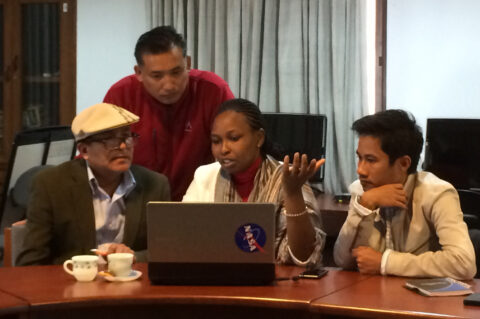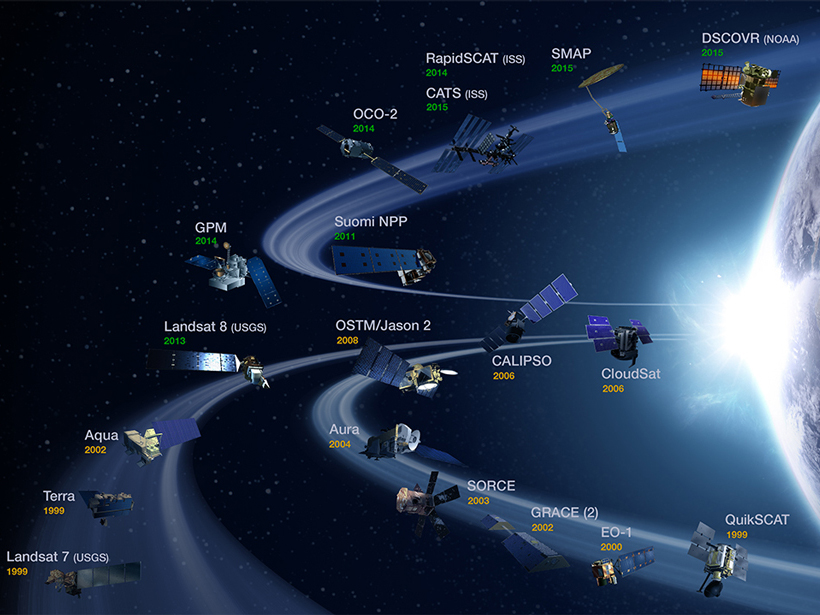The scientific community that harvests satellite data and converts these data to actionable information is facing an embarrassment of riches. With a prolific amount of remote sensing data and scientific output emerging from Earth observation (EO) missions, scientists must figure out how to apply this wealth of information to combatting society’s most pressing problems. Currently, the EO-based scientific community appears to lack the necessary framework to accelerate the growth of applications that can help address key societal issues: food shortages, access to water, and disaster prevention.
What do we need to do now as a capacity-building community that will enable more successful societal application of Earth observations from space?
To discuss this issue, scientists met in Tacoma, Wash., in June 2015 for a 3-day workshop. A key impetus for the meeting was the upcoming NASA Decadal Survey 2017, which relies on scientists to identify and prioritize leading scientific questions and the Earth observations needed to address them. The workshop brought together 27 scientists and stakeholders who develop applications or engage in capacity building. Findings from the workshop are expected to help those involved with the decadal survey integrate the research priorities and key questions to be answered going forward. The overarching question during the workshop was, “What do we need to do now as a capacity-building community that will enable more successful societal application of Earth observations from space?”
Workshop participants agreed that the EO-based capacity-building community should play a pivotal role in ensuring that the EO system (orbital and nonorbital platforms) is used to solve the three great challenges facing humanity: food security, water access and availability, and disaster risk reduction. In addition, this community can be a catalyst to help the world achieve the 17 sustainable development goals set by the United Nations.

Workshop attendees discussed the need to focus on human dimensions (e.g., skill, user-friendliness, compatibility with traditional practices) when working to build capacity rather than confining efforts to technological, or data access, dimensions. To globalize societal applications and provide influence, vision, and long-term stewardship, leaders in the field will have to offer scientific solutions while at the same time connecting solutions with societal demand.
Many participants also supported the idea of having nonscientists participate in the development of scientific project proposals involving the application of EO data. The stakeholders would act as accompanying principal investigators on the projects. This involvement could strengthen capacity building and eventual uptake of EO results into societal applications more efficiently than what is possible today.
Attendees also discussed how the community could make the pursuit of capacity building in connection with Earth-observing systems an attractive career choice for early-career professionals. Early-career and young-investigator grants tailored exclusively for EO-based capacity building and applications work have not yet reached a critical mass. Workshop participants agreed on the need for improved ways of soliciting proposals that encourage more capacity-building projects and workforce development in the field of Earth-observing systems.
The workshop provided a broad range of perspectives on key questions and recommendations for mapping an agenda on globalizing societal applications of EO systems and data. Several topics such as health and air quality, water, agriculture, ecosystems function, and disasters were addressed in detail.
The full workshop report, with key findings and recommendations that emerged on those themes, is available at the Sustainability, Satellites, Water, and Environment Research Group website.
—Faisal Hossain, University of Washington, Seattle; email: [email protected]; Victor Hugo Ramos, Consejo Nacional de Áreas Protegidas, Guatemala, Guatemala; and Robinson Mugo, Regional Center for Mapping Resources for Development, Nairobi, Kenya
Citation: Hossain, F., V. H. Ramos, and R. Mugo (2016), Abundance of satellite data presents opportunity, challenge, Eos, 97, doi:10.1029/2016EO043553. Published on 15 January 2016.
Text not subject to copyright.
Except where otherwise noted, images are subject to copyright. Any reuse without express permission from the copyright owner is prohibited.
Text not subject to copyright.
Except where otherwise noted, images are subject to copyright. Any reuse without express permission from the copyright owner is prohibited.

